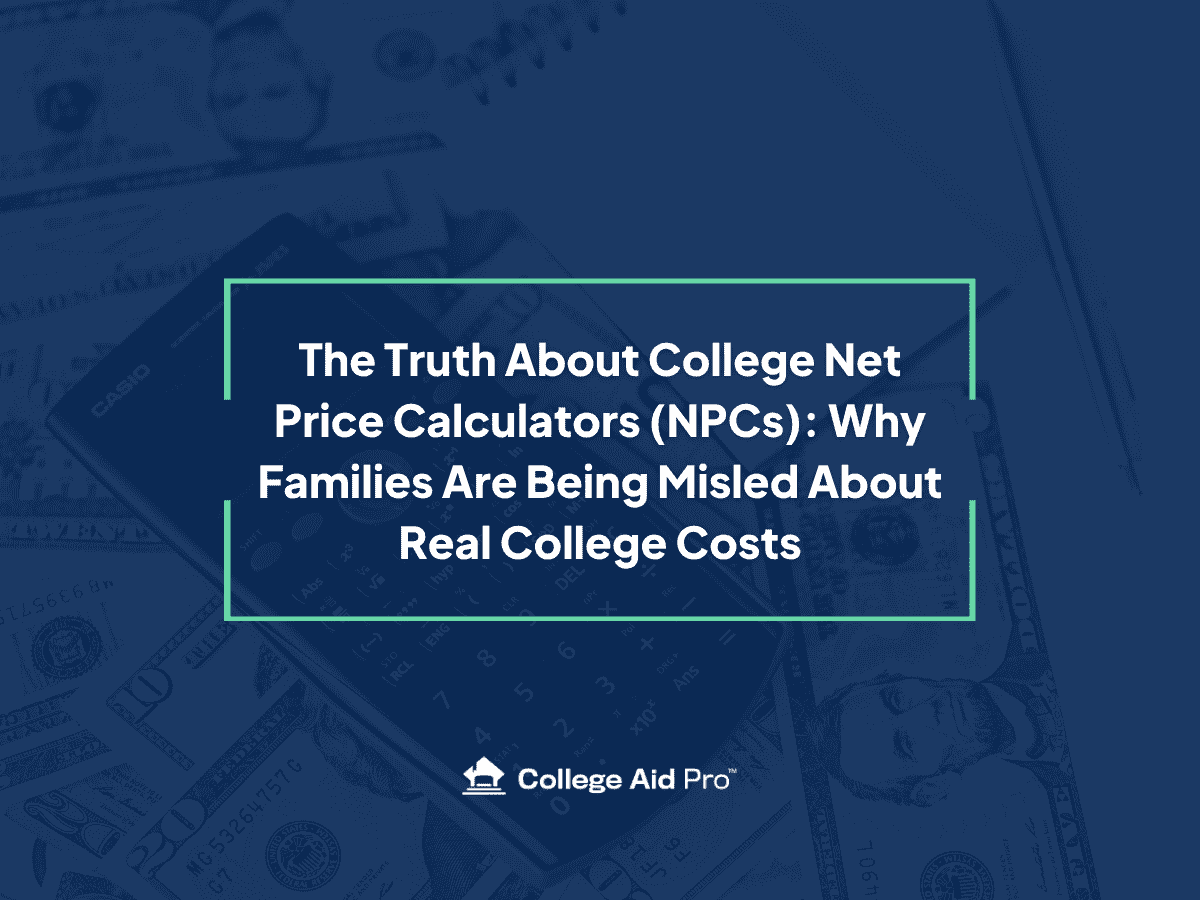About to Borrow for College? Here’s What You Need to Know First
TL;DR:
You can’t compare college loan options yet—interest rates for most loans haven’t been released. But now is the perfect time to understand how borrowing works, what your options are, and what the long-term costs might look like.

The hoodie’s ordered. The Class of 2029 group chat is buzzing. College is getting real.
And now comes the question that catches so many families off guard:
How are we actually going to pay for this?
If loans are part of your plan, you’re not alone—and you’re not doing anything wrong. But before you start filling out applications or comparing lenders, it’s important to know this:
You can’t truly shop for loans yet. The rates for the upcoming school year haven’t been released.
That means there’s nothing to lock in today. But there’s a lot you can do to understand your options—and make better decisions when the time comes.
Most Families Borrow More Than They Expect
It often starts with, “We just need $40,000 for this year.”
But here’s the thing:
- You’ll probably need loans every year.
- College costs usually go up annually.
- That $40,000 might become $160,000 by the time your student graduates.
And when you factor in interest over a typical 25-year repayment? You’re looking at a total repayment of $300,000+.
Today, the average Parent PLUS borrower owes $34,630—and many take decades to repay. Some are still paying off loans as they approach retirement.
That’s not a scare tactic. It’s just what happens when the borrowing decision is made one year at a time.
Loan Rates for Next Year? Not Out Yet.
If you’re feeling pressure to “just get it done,” take a step back.
- Federal Direct Student Loan and Parent PLUS loan rates for the 2025–2026 school year will be hopefully be announced in late May/early June.
- Private and state-based lenders typically set their rates in early summer.
Right now, you simply don’t have enough information to choose the best option. What you can do is get clear on the types of loans available, what they mean, and what you’re really signing up for.

Your Main Loan Options, Explained
Most students can only borrow $5,500–$7,500 per year in federal direct student loans. That covers just a fraction of the cost. The rest? That’s usually on the parents.
Here’s how the most common options work:
Parent PLUS Loans (Federal)
These are federal loans offered to parents of dependent undergraduate students. You can borrow up to the full cost of attendance, minus any financial aid. The current interest rate (2024–25) is 9.08%, and last year’s origination fee was just over 4%—though that could change for the upcoming year.
Repayment begins right away, but income-driven plans and deferment options are available.
Why it matters: These loans are easy to get—you won’t be denied based on a low credit score unless you have an adverse credit history. But that ease can be misleading. It’s simple to borrow more than you can realistically repay.
And even if your student swears they’ll help cover it, you’re the one legally responsible.
State-Based Loans
These are education loans offered by state-based authorities. Now is a great time to see if your state offers any type of state loan program. There are some programs like (RISLA) Rhode Island Student Loan Authority, MEFA in Massachusetts, and Iowa Student Loan that even accept out-of-state applicants.
Rates and fees can be lower than PLUS or private loans, especially for families with strong credit. Some also offer borrower-friendly features like interest rate reductions for on-time payments.
Why it matters: These loans are underused because many families don’t know they exist. They can be a solid middle ground—especially if you’re not excited about the high rates of PLUS loans but wary of private lenders.
Private Loans
Banks, credit unions, and online lenders all offer private student loans. These typically require a co-signer (usually a parent) and base rates on creditworthiness.
Fixed and variable rates are available. Some can look very appealing at first glance—especially if your credit is excellent.
Why it matters: These loans can fill the gap, but they come with fewer protections. There’s no income-based repayment. No forgiveness programs. No government deferment. If something goes wrong financially, you have fewer ways to manage repayment.
Real Example: What It Could Actually Cost
Let’s say you borrow $25,000 per year for four years through Parent PLUS Loans. That’s $100,000 in principal.
With a 9% interest rate and a 25-year repayment plan, your total repayment would be over $250,000.
And that doesn’t include fees, missed payments, or added interest during deferment.
This is why understanding the long-term impact before you borrow is so important.
The Bigger Picture: Why This All Matters Now
As of May 5, the U.S. Department of Education will resume collections on defaulted federal student loans. That means they can:
- Take tax refunds
- Garnish Social Security checks
- Eventually withhold wages
More than 5.3 million borrowers are affected. Nearly 7 million are already behind on payments or in late-stage delinquency.
This isn’t to scare you—it’s to show that loans are real financial obligations with real consequences. And they can follow you (or your child) for a long time.
Questions to Ask Before You Borrow
- How much will we need to borrow over four years, not just one?
- What will our monthly payments be on a standard or extended plan?
- What’s the total cost of those loans with interest?
- Who will be responsible for repayment—you, your student, or both?
- Do we fully understand the difference between federal, state, and private loans?
If you don’t know the answers yet, that’s okay. This is the right time to ask.
How MyCAP Helps
This is exactly one of the reasons we built MyCAP.
Your free MyCAP account gives you tools to:
- Estimate how much you’ll need to borrow at each college on your list
- See projected monthly payments based on different repayment plans
- Understand how loans fit into your broader college affordability picture
👉 Log in or create your free MyCAP account
The Bottom Line
You don’t need to make loan decisions today.
But you do need to understand what borrowing means—financially and emotionally—before you commit.

You’re Doing Great—Now Let’s Make a Plan
Needing loans doesn’t mean you’ve failed.
It means you’re showing up for your student and trying to make college possible. That’s something to be proud of.
But before you sign anything, take a breath.
Get clear on what borrowing means—not just for this year, but for the next decade or more. Ask the hard questions now, while you still have time to adjust your plan.
We’ll be hosting webinars this spring and summer to walk you through your loan options, repayment strategies, and real-life borrowing scenarios. If you want to stay in the loop:
- Subscribe to our newsletter
- Follow us on Instagram, Facebook, and LinkedIn
We’ll share upcoming webinar dates, registration links, and other timely tips to help you borrow smarter.
Until then, we’re here—and we’ve got your back.



